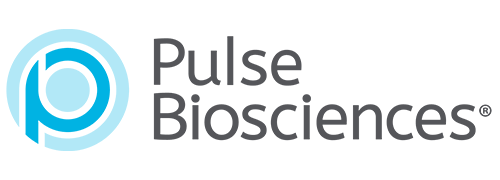George J. Hruza, MD, MBA, FAAD, President, Missouri State Medical Association, spoke with us about the general/aesthetic uses of Nano-Pulse Stimulation (NPS) Technology. Dr. Hruza, who is also Adjunct Professor of Dermatology at St. Louis University and in practice at Laser & Dermatologic Surgery Center in St. Louis, MO, says “NPS Technology is an entirely new and different energy modality, and the science behind it is fascinating.” NPS technology delivers ultrafast (nanosecond) pulses of electrical energy that penetrate the cell membrane and disrupt internal cellular function, leading to regulated cell death. “Its unique non-thermal mechanism of action directly affects only the cell without acting on surrounding non-cellular dermis. This cellular-specific characteristic provides more precise cellular lesion targeting typically unattainable with other methods,” he says. NPS technology will be commercially released as the CellFX System (Pulse Biosciences), which is expected to be available upon FDA clearance.
HOW ARE LESIONS/CELL TYPES SPECIFICALLY TARGETED?
George Hruza, MD: When NPS energy is applied directly to the tissue using an array of tiny microneedles, minute nanopores are created in the cellular membrane that allow ions such as calcium, potassium and sodium, to rapidly pass through and move within the cell. This ionic gradient disruption damages cellular function and structures triggering regulated cell death (RCD).
In histology studies of human tissue treated with NPS energy, the appearance of non-viable “ghost cells” was seen at 24 hours. Moreover, caspase-3 evidence of programmed cell death was identified 2-4 hours post-NPS treatment with minimal apparent epidermal damage in this early time frame. By 24 hours post-NPS exposure, most of the skin sites analyzed by Dr. Darius Mehregan, MD (Wayne State University, Dearborn, MI) exhibited non-viable epidermal cells and very low levels of inflammation throughout the healing process. At optimal energy levels tested in this study, normal re-epithelization was typically observed by 14 days post-NPS exposure.
In short, NPS energy triggers a natural cascade of intracellular regulated cell death at the cellular organelle level leading to the gradual elimination of non-viable cells as part of the normal healing process. In this way, cellular lesions such as Seborrheic Keratosis (SK), Sebaceous Hyperplasia (SH) and non-genital warts, to name a few, are cleared with good cosmetic results.
In our published multicenter placebo-controlled study of SKs, 82 percent of 174 treated SK lesions were rated as clear or most clear after 106 days in 58 adult patients. Patients rated 78 percent of lesion outcomes satisfied or mostly satisfied. The data was based on a single NPS treatment at a relatively high NPS dosage.
WHAT IS TREATMENT LIKE FOR THE PATIENT?
Dr. Hruza: For the patient, the NPS procedure is preceded by injections of local anesthetic to eliminate discomfort during pulse delivery. A patient may experience muscle contractions or a tingling, twitching sensation during the delivery of pulses. There are no residual sensations at the conclusion of the procedure. No advance preparation is required, although pre- or post-treatment sun avoidance, sunscreens and/or topical bleaching agents may be considered for higher Fitzpatrick skin types to minimize the risk of post-inflammatory hyperpigmentation.
WHAT ARE SOME OF THE MOST PROMISING POTENTIAL APPLICATIONS BEING STUDIED?
Dr. Hruza: The early published data on SH and SK and the more recently presented data on non-genital warts shows great promise for these common lesions encountered in every day dermatologic practice. The studies also suggest that the same mechanism of efficacy may be applicable to many other types of cellular benign lesions we see regularly.
In my mind, the key benefits of NPS technology are its use of non-thermal energy, cell-specific effects, precise lesion targeting, and the ability to distinguish and preserve adjacent non-cellular dermis. This means that we can extricate cellular lesions of various depths in all skin layers while preventing collateral damage to the acellular dermis and, at the same time, offer our patients a good cosmetic outcome.
When viewed through this lens of cell-specificity, almost any unwanted benign or malignant growth made up of cells could potentially be a target for this technology, including SKs, cutaneous warts, SHs, acne, benign nevi and, possibly, certain types of scars. As a Mohs surgeon, I’m particularly excited about the future prospects of using NPS technology in BCC with early feasibility studies looking promising. This could potentially allow us to treat many BCCs with minimal to no residual scarring.
